Flat Lay photography can be great fun. You get to be creative by arranging different props to create a story. The most effective flat lay images evoke a mood and are specific to a certain genre.
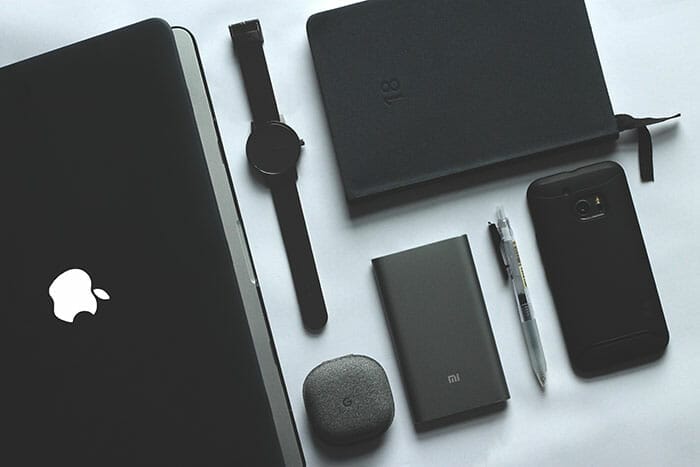
You can see from these two examples that the style of a flat lay can vary dramatically. The one on the left is all about modern technology, and has cooler colour tones. The first is warmer, both in colour tones and in execution. It tells a story of someone having breakfast and leisurely reading a magazine.
While these two examples are very different, they do share some similarities.
Flat lay images are usually shot looking directly downwards. Both images use diagonal angles in their composition, and both have a very strong theme.
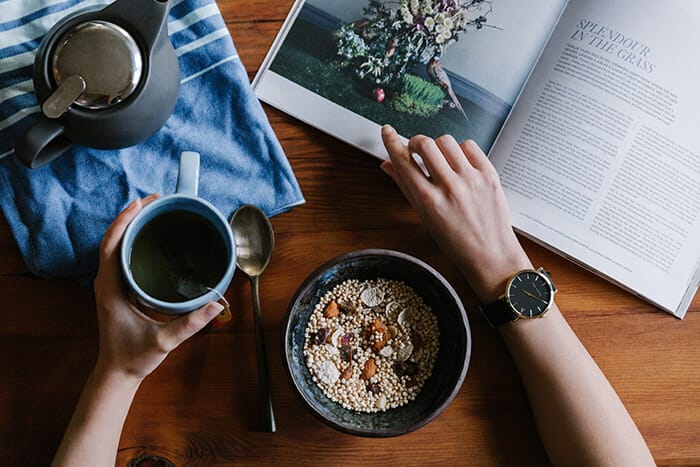

Flat lay images are used a lot in marketing campaigns. This is because they can create a certain mood very quickly for the viewer.
For instance, if we see a lovely morning routine, with coffee and fresh fruit and books, that idea immediately resonates with the viewer. We all can appreciate what that might feel like. That is a very powerful tool for advertisers.
Flat lays aren’t all about marketing though. They’re a fantastic way to show off a hobby you have or to simply practice photography indoors. Being able to create emotion and a story within an image is an invaluable skill. Flat lays are a great way to practice.
Lifestyle influencers on Instagram and Pinterest use flat lay images to give their audience a hyper-real peek into their everyday lives. Flat lay images also make for perfect thumbnails for YouTube videos or blog posts.
This is because people can get the vibe of a content with one simple glance. That’s such a powerful tool.
And here is tip number one when it comes to flat lay photography: start with a very specific theme. Here are some example themes:-
• Morning routine
• Technology
• Travel
• Cooking a recipe
• Favourite accessories
• A specific hobby (painting, photography, etc.)
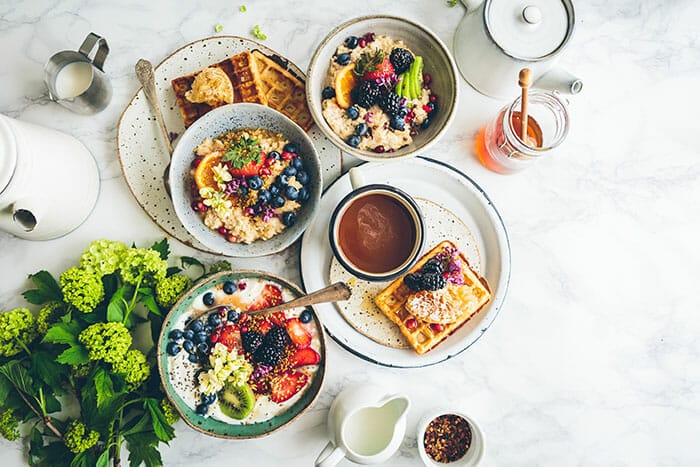
Sometimes you can liven a flat lay image up by giving the impression of movement. You’ll notice above, the painting flat lay is posed in a way that looks like the artist has stopped mid-painting to take a photograph. The flat lay would seem dry and boring if the paint brushes were clean and the paint pristine.
Similarly, in some flat lay photography you’ll see a hand or arm in the frame as they reach for a coffee or turn a page. Adding a mid-action element like this can work really well.
Movement isn’t always necessary. It all depends on the mood you want to create, and the story you wish to tell.
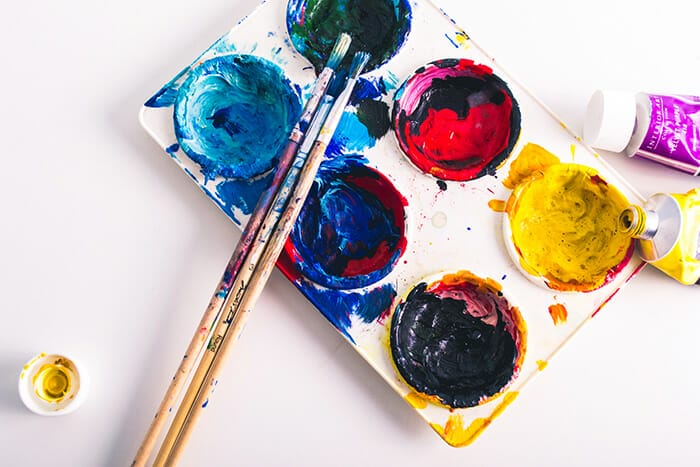
In a lot of flat lay images, you don’t tend to have one singular subject. Flat lays are designed to work in an ensemble to get their message across. Diagonal lines are popular, as well as square-on arrangements.
Check out some composition ideas below.
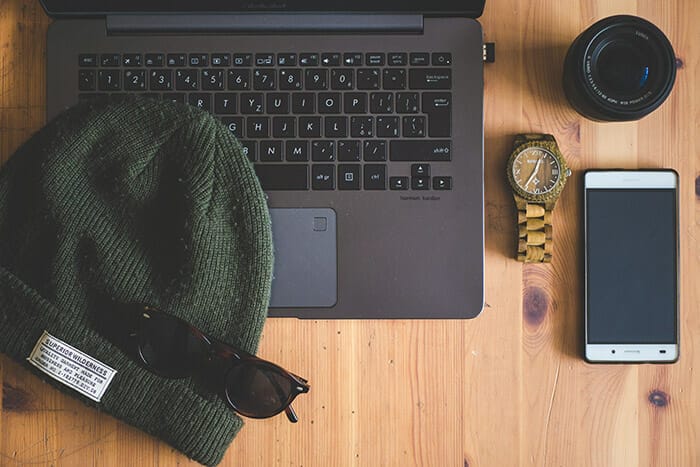
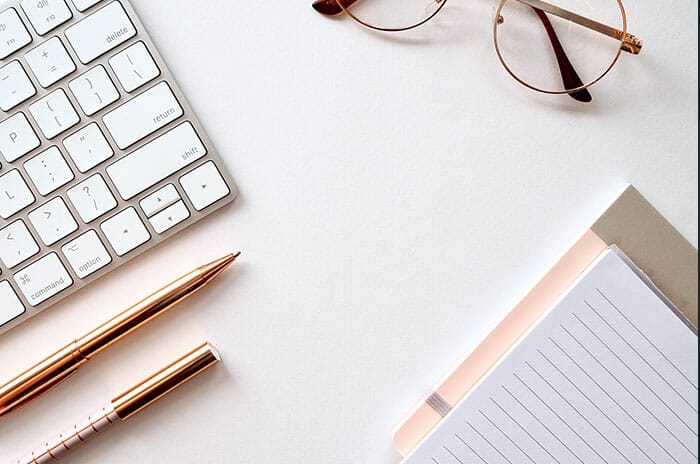
It can be wise to keep your colour pallete simple when shooting a flat lay. Often the backdrop is plain, like a white bedsheet or a wooden table, and the colours within the image all work well together.
You should keep colour choices in mind when choosing props for your image. Choosing two contrasting colours can work well. Also sticking to just one colour, like different shades of green, can be effective too.
Let’s see some examples…
The first image has a simple colour theme of white and gold. Keeping to just two simple elements makes the image very pleasing.
The second image has green hues and then one warmer colour with the mug of tea. The warm and cool tones contrast nicely to make a striking image.


Lighting a flat lay image doesn’t have to be complicated. You could set your station up by a window and utilise some natural light. Often your window is diffused enough, but if you’d like to make the light even softer, you could use netting or a white sheet.
Whether you use natural light or intend to add your own, you’ll notice that there are two main styles within flat lay images.
You can see the direction of the light by paying close attention to the shadows. You’ll see often that the shadows in a flat lay image all head in one direction on a slant.
This means the light source was to the above-left or above-right of the image, and not directly overhead. You can do this yourself with either natural light or your own lighting.
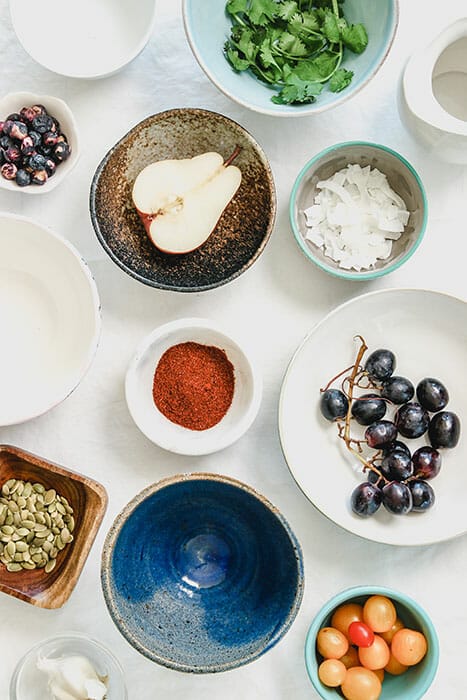
Another popular lighting technique for flat lay images is to remove the shadows as much as possible. We do this by creating very diffused, soft light. A way to do this is to utilise two lights, similar to the image here. When one light sends the shadows in one direction, the second light is there to remove them. This results in a soft, shadow-free environment.
Another way to achieve this is by using a reflector and a window.
Generally, flashguns are not used for flat lay photography. They can give off a quite harsh light and soft lighting works best for flat lays.

Flat lay photography can be a fantastic project. You don’t need any special equipment, you only need a camera, some light, and your imagination. Here are some quick-fire tips to end the flat lay photography article:
• Choose a theme that you’re passionate about and already have lots of props for.
• Whether you use natural light or artificial light always make sure it is soft and pleasing.
• Choose your colours deliberately, and don’t go overboard with too many conflicting colours. Often less is more.
• Think of the feeling you want the viewer to get. Will you use warm tones? Cool tones? Will the vibe be minimalistic, or lovingly chaotic?
• While flat lay images can appear random, every prop included must serve the theme. Choose every prop consciously.
• Think of diagonal lines, chaos, or order. The composition is entirely up to you!
• Some flat lay images keep everything contained. Some have props running off the edges, to give the sense that the flat lay is much bigger than it really is. Which concept would work best for your theme?
If this article has inspired you, check out 5 indoor photography projects next!
Shooting sunsets using amazing 5-in-1 magnetic lens filters from Kentfaith, the 1st choice for photo & video products.
Popular memory cards for photography – what’s the best SD card for your digital camera? Choose the right capacity and class speed in our guide
Discover the BEST way on how to clean a camera sensor using swaps, rocket blowers and pencil brushes to give your shots a dust-free finish!
Learn the basics of photography – fast – with our FREE 60-Second Photographer online course. Each class is short and sharp with simple, actionable steps that give you immediate results.
x 30 lessons

© iPhotography™
Become a confident and competent photographer in less than 30 minutes!
Before you leave, make sure you’ve secured your FREE online photography course (worth £29.99)
Each class is just 60-seconds or less making it the fastest and easiest way to learn photography!